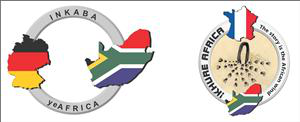Speaker
Mr
Martin Bentley
(AEON - NMMU)
Description
The Eastern Cape, South Africa, suffers from a general lack of high-resolution geophysical data. This is largely due to a historical lack of interest in subsurface exploration in the area from an economic
viewpoint which led to a lack of funding being available to carry out such surveys. Until relatively recently, studies have been largely limited to small areas for particular research projects.However,
valuable information of subsurface conditions can be provided by geophysical methods. This includes information about geological structures (including folding and faulting), intrusive bodies, and potential mineral deposits.
Airborne data, particularly of radiometric and magnetic properties has been used worldwide for a number of years with good results. In addition, airborne collection of gravimetric data is becoming more
reliable. Resolution of these three geophysical data collection methods from the air is approaching the resolution of ground-based surveys, but airborne platforms provide much faster and cheaper acquisition over wider areas. The large amount of data that is collected has led to the development of a number of computer-based systems for processing and visualising this data in informative ways. However, many of these existing systems are aimed primarily at relatively large industry clients. This makes most of them extremely expensive and difficult to modify for new applications. The use of these computer-systems is therefore often prohibitively expensive in academic and small or start-up business contexts.
This project seeks to address both these problems with the collection of high-resolution airborne magnetic, radiometric and gravimetric data over parts of the Karoo Basin in the Eastern Cape, using a gyrocopter platform. The area between Jansenville, Graaf Reniet and Aberdeen will be the primary focus for the data collection effort.The data will be collected as part of the Airborne Geophysical Observatory (AGEO), which is a project of the African Earth Observatory Network, based at Nelson Mandela Metropolitan University, Port Elizabeth. This will utilise a gyrocopter as a data collection platform, which is cheaper than traditional fixed-wing or helicopter platforms. Software designed for the processing, integration and three-dimensional visualisation of this newly-gathered data will be developed in tandem with the data collection.
At the conclusion of this project, a new, high resolution data set will be available for an improved understanding of the general basin architecture, including geological structures and intrusive bodies, and a possibly better understanding of the controls within the basin of groundwater flow. It may also help in guiding future land-use. The software developed as part of the project will also lower barriers to entry for conducting similar initiatives in the future.
Primary author
Mr
Martin Bentley
(AEON - NMMU)
Co-authors
Dr
Lester Cowley
(NMMU)
Prof.
Moctar DOUCOURE
(AEON - NMMU)

